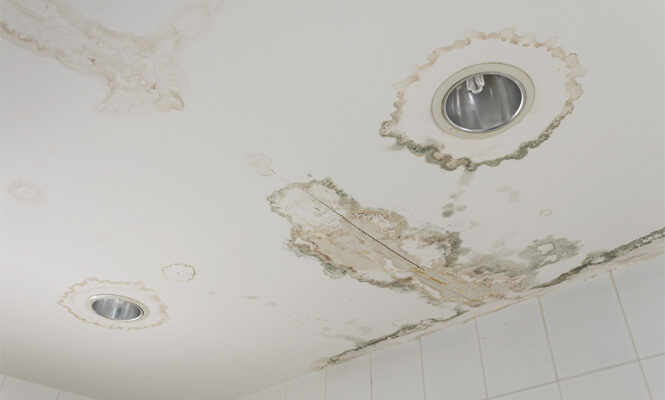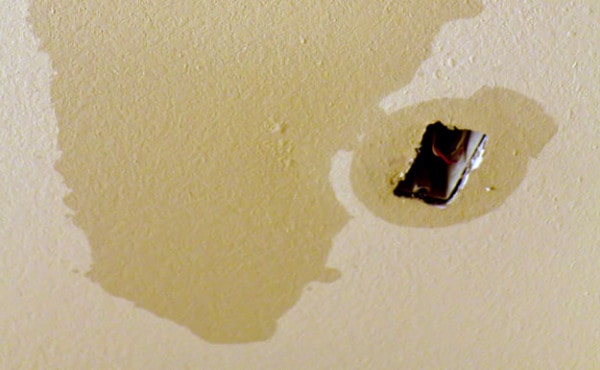The writer is making a few great points regarding How to Remove Water Stains from Walls and Ceilings overall in the content below.

Water spots on walls are not positive to the eyes. Your residence ought to lack discolorations on the walls, roofing, or floors. That is the optimal state of a residence and its structures. Yet, occasionally it seems practically unpreventable to experience water discolorations on walls in homes.
Property owners residing in damp regions regularly take care of the concern of water discolorations on wall surfaces. Yet that does not need to hold true for you. With all-round and also exact information on the sources of water spots and prompt repair procedures, you will certainly always be a step ahead of such events. This write-up assures to be a valuable guide for you.
3 Common Sources Of Water Stains on Wall Surfaces
In contrast to common belief, water spots on walls do not constantly stem from inadequate building products. There are a number of causes of water discolorations on walls. These consist of:
Moist
When warm damp air meets dry cold air, it triggers water droplets to base on the walls of buildings. When there is heavy steam from food preparation or showers, this happens in bathrooms as well as cooking areas. The water droplets can tarnish the surrounding walls in these parts of your residence as well as spread to various other areas.
Moist or condensation impacts the roofing and walls of structures. This causes them to show up darker than other locations of the residence. When the wall surface is wet, it produces an ideal environment for the development of microbes as well as fungi. These might have unfavorable results on health and wellness, such as allergic reactions as well as respiratory system disorders.
Poor Water drainage
This will certainly prevent water from leaking right into the wall surfaces. This web links to excessive dampness that you observe on the wall surfaces of your building.
So, the leading reason for damp wall surfaces, in this case, can be a bad water drainage system. It can also result from bad management of sewer pipelines that run through the building.
Pipeline Leaks
Many houses have a network of water pipes within the wall surfaces. This ensures that the pipelines are well away from the reach of destructive rodents. It constantly raises the viability of such pipes, as there is little oxygen within the wall surfaces. This inhibits corrosion.
A disadvantage to this is that water leak influences the walls of the structure and also causes widespread damage. An indicator of defective pipes is the appearance of a water discolor on the wall surface.
Pro Idea
A houseplant in your house likewise boosts its moisture. If the house is currently moist, you might desire to present houseplants with marginal transpiration. An instance of ideal houseplants is succulents.
Water Discolorations on Wall Surface: Fixing Tips
Home owners would usually desire a quick fix when managing water discolorations. They would soon understand this is disadvantageous as the water discolorations persist. So, below are a couple of handy pointers that will certainly assist you in the repair service of water spots on walls:
- Always fix the source of water discolorations on walls
- Engage the aid of specialist repair service services
- Technique regular cleanliness and clean stopped up sewage systems
- When building a home in a water logged location, make sure that the employees conduct correct grading
- Tiling locations that are prone to high condensation, such as the kitchen and bathroom, assists in reducing the accumulation of wet
- Dehumidifiers are additionally practical in keeping the wetness levels at bay
Verdict
No one desires to have water spots on walls in their house, it can happen to the ideal of us. This short article gives you take advantage of, as you now recognize how to manage this accident if it does take place.
It is always best to hire expert services to assist fix the problems in your home.
Often it seems virtually unavoidable to experience water discolorations on walls in residences.
Contrary to preferred belief, water spots on walls do not constantly stem from inadequate building products. There are several reasons of water stains on wall surfaces. The water beads can discolor the bordering walls in these components of your home as well as spread to various other areas.
Below are a few valuable pointers that will assist you in the repair of water spots on wall surfaces:
CHECKING FOR WATER DAMAGE
Water damage can be costly, and it may begin before you even notice the first signs of trouble. Water damage can cause mold and mildew in your walls and floors, which can create an abundance of health concerns for your family. It can also lead to costly repairs of various appliances and general home fixtures. To avoid the pricey consequences of water damage, here are Warner Service’s top 5 places you should check:
- The walls – The easiest place to spot the beginnings of water damage is on the walls and ceilings of your home. If water damage is present, there will most likely be water stains, especially around the windows and doorframes, and/or cracks in the drywall. If a stain looks unusual (discolored to brown, black or gray, raised texture), has a swollen appearance or is soft to the touch, contact a professional immediately.
- The pipes – To avoid water damage, consistently check the pipes in your kitchen (especially the dishwasher and ice maker), bathrooms, laundry room (specifically washing machines) and basement for corrosion, leaks and water stains. Pay special attention to where the pipes connect in your home and the location of caulking around the bathroom fixtures, including toilets, sinks, showers and tubs. Missing or loose caulking and grout could be signs of leaking water. This seepage can also quickly cause mold and rust, so double check your water heater and tank for wet spots on the floor.
- The floor – Water damage is very easy to spot on the floor. Look for any warping or buckling of the material, especially in the basement. If your home has wood flooring, look for bright white or dark stains. If your home has carpeting, keep it dry and clean. A damp carpet that smells of mold could cause water damage and health problems. To avoid this, consider installing floor pans under your appliances to help prevent damages from small, slow and undetected leaks.
- The basement and attic – If your basement or attic smells odd check for mold and mildew around the area, especially the valley where the roof meets. While you are inspecting those areas, check for wall cracks, floor stains, rust and dampness in the insulation. If you live in a colder and/or rainier climate, perform routine checks for water damage from melting snow or ice and rain.
- The exterior – Check the roof for damaged flashing and missing, cracked or curled shingles. There should also be no standing water anywhere outside your home. This could be caused by puddles, leaky rain gutters or hoses, poor drainage, or short gutter spouts. Invest in a sump pump system or water flow monitoring system, and perform routine maintenance on these outdoor appliances to avoid indoor water damage.

Hopefully you enjoyed reading our part about How to Find and Repair Water Leaking in the Wall. Thanks so much for taking a few minutes to read our blog. If you liked our post kindly be sure to pass it around. Thanks so much for taking the time to read it.
Customer Reviews
Comments on “Unmasking Wall Water Stains - Effective Checks And Repairs”